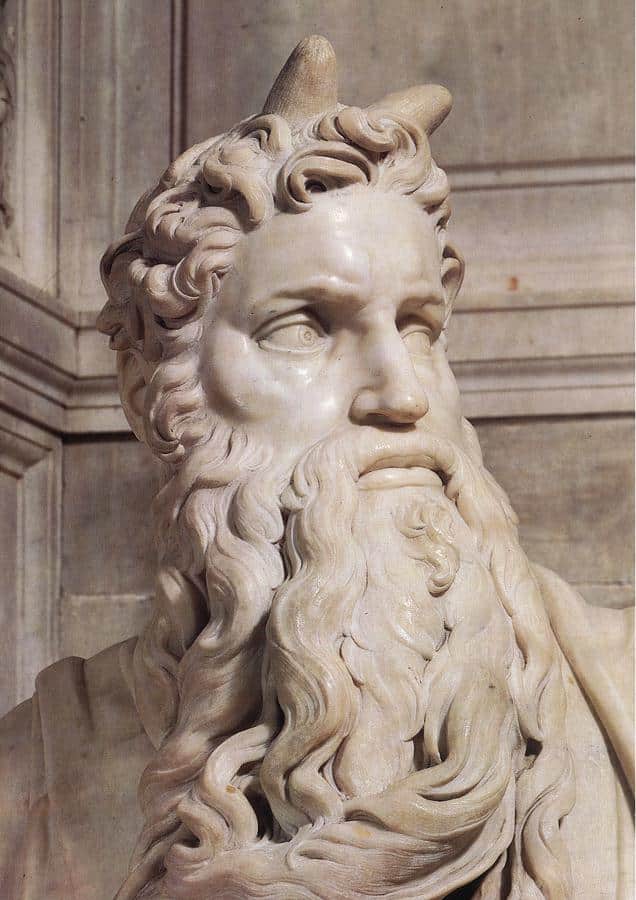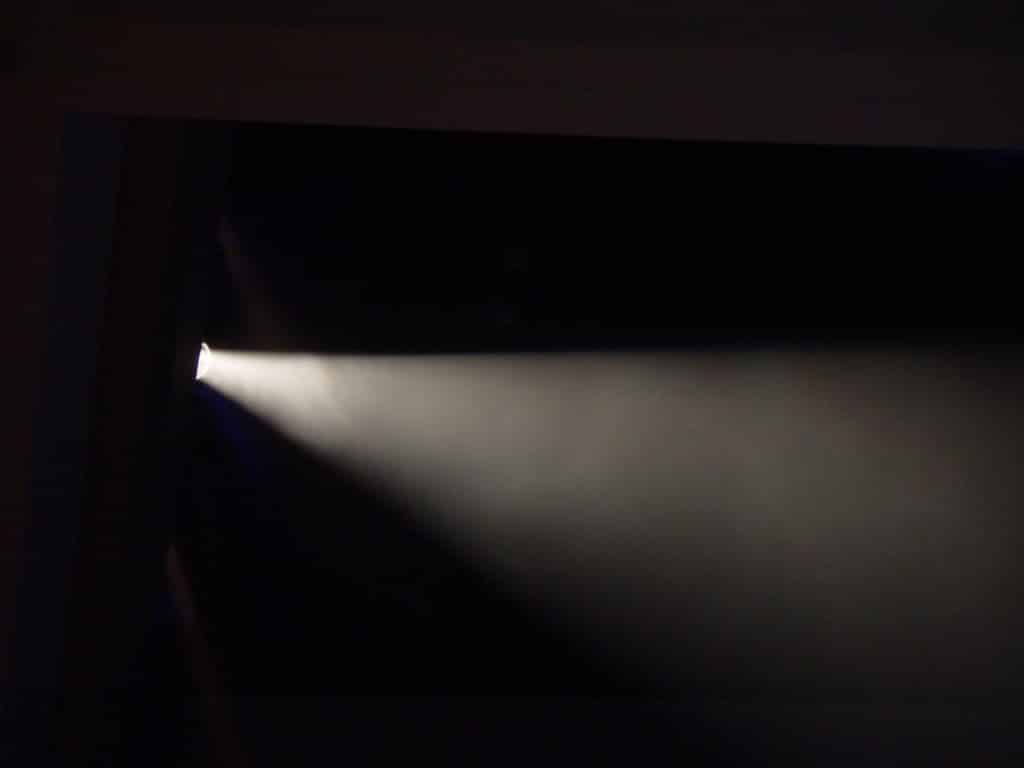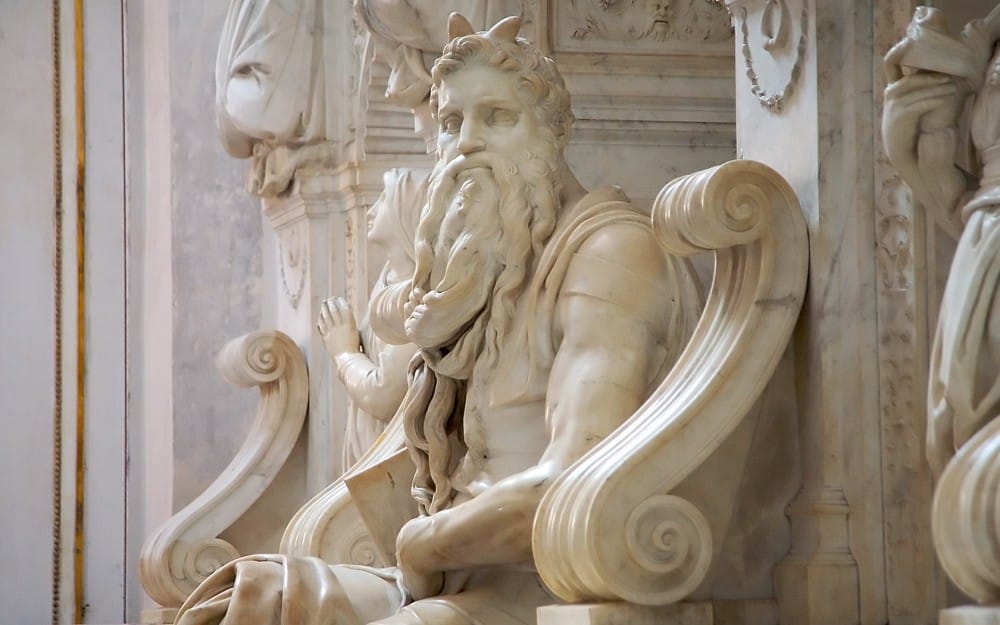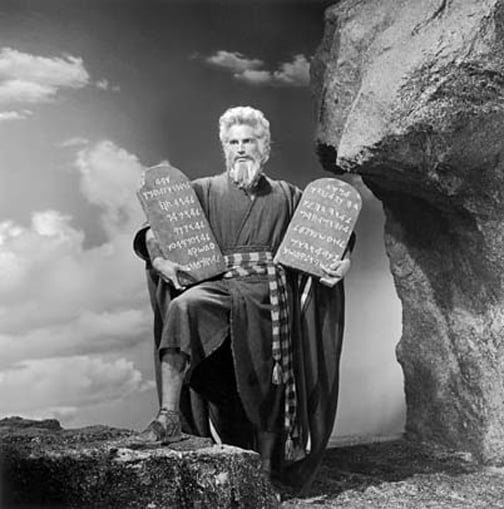The Horns of Moses – Defending Michelangelo’s Horned Moses
Art historians love to debate the horns of Moses. Michelangelo’s famous statue of Moses at Saint Peter in Chains in Rome depicts Moses with two horns. Most claim that the horns of Moses go back to Saint Jerome’s “translation error” in the Latin Vulgate. I’d like to challenge that assumption. Not only did Saint Jerome have reason to translate the horns of Moses, Michelangelo had reason to carve them.
[If you’re getting this post by email, be sure to select “always display images from [email protected].” Otherwise, you want see all the great pictures and photographs necessary to make sense of all this theology.]
In the photo above you can see the horns of Moses. The horns come from the Vulgate version of Exodus 34:
And when Moses came down from the Mount Sinai, he held the two tables of the testimony, and he knew not that his face was horned from the conversation of the Lord. And Aaron and the children of Israel seeing the face of Moses horned, were afraid to come near.” (Exodus 34:29–30, D-R)
Most interpreters say that this should be translated not as “horned” but as “his face shone.” The idea being that his face glowed with the residual glory of the Lord.
What does the Hebrew say?
The original Hebrew word for “horned” is qaran. It literally means “horned.” Here the entry from the Brown-Driver-Briggs Hebrew Lexicon giving three definitions:
1. a. horn of ram (אַיִל) Gn 22:13, so in Daniel’s vision Dn 8:3(×2), 6, 7, 20, and (of goat) v 5, 8, 9, 21; of oppressors in Isr. (under fig. of rams) Ez 34:21, so of nations Zc 2:2(×3); of רְאֵם Dt 33:17 ψ 22:22 (both fig., cf. 92:11); of Zion under fig. of threshing-ox Mi 4:13; ק׳ בַּרְזֶל 1 K 22:11 = 2 Ch 18:10 (symbol.); seen in Zech.’s vision Zc 2:1. b. used as oil-flask 1 S 16:1, 13 1 K 1:39 (cf. קֶרֶן הַפּוּךְ Infr.). c. ק׳ הַיּוֹבֵל, as wind-instr. Jos 6:5 (cf. שׁוֹפָר). d. קַרְנוֹת שֵׁן Ez 27:15 (from curved shape of tusks).
2. fig., of pers., symbl of strength Dt 33:17, ק׳ יִשְׁעִי 2 S 22:3 = ψ 18:3 (of י׳ as deliverer); others sub 3 or 4; especially as lifted up (רום, as of a lordly animal, cf. Dr 1 S 2:1), denoting increase of might, dignity 1 S 2:1, 10 La 2:17 ψ 75:11; 89:18, 25; 92:11; 112:9, so perhaps 1 Ch 25:5 (v. Kau; > Be blow loudly [cf. 1 c]), + לְעַמּוֹ ψ 148:14 (subj. י׳); also haughtiness, arrogance 75:5, 6; opp. גָּדַע ק׳ hew off horns, i.e. reduce, humiliate, La 2:3 ψ 75:11, pass. Je 48:25, so וְעֹלַעלתִּי בֶעָפָר קַרְנִי Jb 16:15; אַצְמִיחַ ק׳ לְבֵית יִשׂ׳ Ez 29:21 is appar. of restoration of might (as ψ 148:14 supr., c. וַיָּרֶם), but אַצ׳ ק׳ לְדָוִד ψ 132:17 of raising up individual ruler of Davidic line.
3. of altar, horn-like projections at corners (26 times), Am 3:14 Je 17:1 Ez 43:15, 20 ψ 118:27 Ex 27:2(×2) + 8 times Ex, Lv 4:7, 18 + 6 times Lv (all P); as sanctuary, refuge 1 K 1:50, 51; 2:28. † 4. hill (so in Arabic, peak, isolated hill, cf. Ges) Is 5:1. † 5. קַרְנֵיִם מִיָּדוֹ לוֹ Hb 3:4 rays at his side(s) had he (of lightning-flashes in theoph, cf. Now Da).—Am 6:13 v. קַרְנֵיִם n.pr.loc.
As you can see, qaran refers to the 1) horns of goats/oxen, 2) a metaphor for strength, and 3) horns/corners associated with the altar/sanctuary/presence of God. As we’ll see, I think the association of “horns” with the altar of God is especially important for this analysis. I fear that most miss this association of Moses’ face with the altar of God.
Incidentally, the Hebrew verb form in the hiphil stem literally means “grow horns.”
Horns of Moses or Luminous Rays of Moses?
No doubt, the Hebrew reads “horns,” but horns need not be goat horns. A “ray” is, in a sense, a horn. When you shine your flashlight in the darkness, it makes the shape of a horn.
We could be talking about rays or “horns” of light.” This has precedent in other Hebrew passages: “His brightness shall be as the light: horns are in his hands: There is his strength hid.” (Habakkuk 3:4, D-R)
Here the “horns” in God’s hands seem to be rays of light not animal horns.
This is how almost all interpreters take the Hebrew passage.
Horns of Moses = Face of Moses as Altar
Whether we are dealing with little animal horns or horns of light, allow me to suggest that the phenomenon reveals Moses as an altar. Moses spoke “face to face” with God. The sacramental presence of God has a residual presence on his face. This happens to none of the other prophets. Only Moses. You may recall that the altar of the Old Testament had “horns” and we find the same description in the apocalyptic visions of Revelation:
And the sixth angel sounded the trumpet: and I heard a voice from the four horns of the golden altar which is before the eyes of God.” (Rev 9:13)
We see here a “horned altar” before the “eyes of God.” So when Moses speaks with God, he face becomes horned somehow. After Moses acquired this facial feature, the Israelites were fearful and so “he put a veil upon his face.” (Exodus 34:33, D-R). The veiling of his face demonstrates that his face was an altar or sanctuary of God.
The Horns of Moses by Michelangelo
If you look at the horns of Moses sculpted by Michelangelo, it’s obvious that these are not animal horns. They don’t look like ram horns or goat horns or oxen horns. They are unique. In fact, the horn over left eye is a little off-kilter.
Michelangelo was good, but he wasn’t good enough to sculpt “rays of light” or “horns of light” out of carrara marble. How can you carve light? Instead, he carved horns just like it said in the Latin Bible. When I look at the horns, I see a stylized depiction of the two tables to the Ten Commandments jutting out of his mind. Here’s Charlton Heston to help you see it:
My personal opinion is that Michelangelo wasn’t stupid or misled by a translation error. He wasn’t slavishly following Saint Jerome’s “mistranslation.” He was aware of the tradition. There was no way to sculpt “horns of light” and so he took artistic license to form non-animal horns that evoke the glory of God, power, divinity, and the tablets of the Ten Commandments.
[reminder]Now it’s your turn to share your opinion. Do you agree with this analysis of the Hebrew and Michelangelo’s depiction of the horns of Moses?[/reminder]
What to Watch Next
SHOP THE TAYLOR MARSHALL STORE
Dive Deeper

GET CONFIDENT IN YOUR FAITH
Explore the fascinating world of Catholic teachings with Dr. Marshall. Together you’ll unpack the brilliant answers the Church gives to tough questions about the Faith. The best part: you go at your own pace. Start this exciting journey today.


 >
>






